Web Design 2025: AI, UX/UI & Sustainability - Shaping the Future of Websites
Explore the top web design trends for 2025: AI-powered design, intuitive UX/UI, and sustainable practices. Prepare for the future of your website today!

Web Design Trends 2025: A Comprehensive Overview
The world of web design is evolving at a rapid pace, and 2025 promises to bring significant changes. To remain competitive and attract users, it is crucial to understand and embrace the latest trends. This article will delve into three key areas that are shaping the future of web design: the application of artificial intelligence (AI), intuitive user experience (UX) and user interface (UI), and sustainable web design.
1. The Application of AI in Web Design
AI is no longer a distant concept; it is gradually becoming an indispensable tool in web design. AI has the ability to automate repetitive tasks, freeing up designers to focus on the more creative aspects of their work. Furthermore, AI can personalize the user experience on a large scale, delivering relevant and engaging interactions for each individual.
One of the most important applications of AI is SEO optimization. AI algorithms can analyze website data, identify valuable keywords, and suggest improvements to increase rankings on search engines. AI-powered web design tools are also becoming increasingly popular, allowing designers to create beautiful and effective websites quickly and easily.
For example, e-commerce websites can use AI to recommend products tailored to the preferences and purchase history of each customer. News websites can use AI to personalize content, displaying articles that users are most interested in. Even government websites can use AI to provide information and services in a more efficient and user-friendly way.
Imagine a travel website that uses AI to analyze your preferences, your budget, and the time you have available, and then recommends travel packages specifically designed for you. Or an educational website that uses AI to adjust the learning pace to suit the abilities of each student. The possibilities are endless.
To learn more about how to apply AI to web design, you can consult online articles and resources, or seek advice from experts. A professional web design company like Vinawebapp.com can definitely help you build a website that effectively utilizes AI.
2. Intuitive and Interactive UX/UI
User experience (UX) and user interface (UI) play a crucial role in the success of any website. In 2025, intuitive and interactive UX/UI will continue to be a top priority. This means that websites need to be easy to use, easy to navigate, and visually appealing.
Minimalist design, with a focus on white space and simple visual elements, will continue to be a popular trend. Micro-interactions, small but subtle effects that respond to user actions, will be used to increase engagement and satisfaction. Animation, used skillfully and purposefully, can help guide users and create a more enjoyable experience.
Creating an intuitive and easy-to-use interface not only increases user satisfaction but also improves conversion rates. When users can easily find what they are looking for and take desired actions (e.g., making a purchase, signing up for a newsletter), they are more likely to become loyal customers.
For example, compare two e-commerce websites. One website has a complex, difficult-to-navigate interface filled with unnecessary information. The other website has a simple, intuitive interface that focuses on the main products. Users are more likely to make a purchase on the second website.
Trending websites today invest heavily in UX/UI. Facebook, Google, and Amazon are constantly improving their interfaces to be more user-friendly. These websites are always experimenting with new layouts, new fonts, and new interactive elements to engage users.
To design an effective UX/UI, you need to understand your target audience, conduct user research, and test different designs. Don't hesitate to seek help from UX/UI professionals. Companies like Vinawebapp.com can help you create an attractive and effective interface.
3. Sustainable Web Design
In the context of increasingly severe climate change, sustainable web design is an important and increasingly relevant trend. Sustainable web design is the process of creating websites that have a minimal negative impact on the environment.
One of the most important ways to reduce a website's carbon footprint is to optimize images. Large, unoptimized images can slow down page load times and consume more energy. By compressing images and using efficient image formats, you can significantly reduce the carbon footprint of your website.
Using green hosting, that is, hosting provided by data centers that use renewable energy, is another way to reduce environmental impact. Simplifying code and removing unnecessary elements can also help reduce the amount of energy that a website consumes.
Sustainable web design is not only good for the environment but also offers many other benefits, including cost-effectiveness and brand reputation. Websites that load faster and consume less energy can help reduce hosting costs and improve user experience. Companies that demonstrate a commitment to sustainability can attract environmentally conscious customers and employees.
There are many tools and resources available to help you build environmentally friendly websites. Google PageSpeed Insights can help you identify areas where you can optimize website performance. Website Carbon Calculator can estimate the carbon footprint of your website.
Sustainable web design is not just a trend; it is a responsibility. By taking simple steps to reduce the environmental impact of your website, you can contribute to a more sustainable future.
Many companies are starting to prioritize sustainable web design, and you should too. Consider partnering with a web design company with experience in sustainable design, such as Vinawebapp.com, to ensure that your website is as environmentally friendly as possible.
In conclusion, 2025 will see the rise of AI in web design, a focus on intuitive and interactive UX/UI, and an increasing priority for sustainable web design. By embracing these trends, you can create websites that are effective, engaging, and environmentally friendly.

